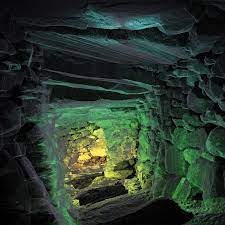ARCHAEOLOGISTS FROM AOC ARCHAEOLOGY HAVE BEEN USING LASERS TO MAP SUBTERRANEAN IRON AGE STRUCTURES, SUCH AS THE CRACKNIE SOUTERRAIN, AN IRON AGE PASSAGEWAY IN THE BORGIE FOREST, SCOTLAND.
A souterrain, from the French name sous terrain, meaning ‘underground’, are tunnels constructed during the Iron Age. Almost 500 souterrains have been identified in the Scottish Highlands, however, their function is debated, with the most prominent theory suggesting that they were stone-lined cellars for storing perishables such as meat and cheese.
Speaking to Wired, Matt Ritchie, resident archaeologist at Forestry and Land Scotland said: “Perhaps they were for storage, such as grain in sealed pots or dairy products like cheese. Perhaps they were for security, keeping valuables safe, or slaves or hostages secure. Or perhaps they were for ceremonial purposes, for household rituals, like a medieval shrine or private chapel.”

The Cracknie Souterrain is 12.8 metres in length, 0.6 to 1.8 metres in width, and 1.3 to 1.47 metres in height. A small entrance measuring 0.6 metres leads to a gradually sloping corridor, with side walls constructed using dry stone without mortar, and a ceiling made from overlapping stone slabs.

The researchers mapped the Cracknie Souterrain in 2022 using an advanced precision imaging laser scanner, which captures an immersive 3D scan of the interior with spherical images generated through a LiDAR sensor at a rate of 680,000 points per second.
Working with exploration groups such as the Graeme Cavers, the technology has been applied to shed light on the condition and structure of souterrains and produce accessible 3D multi-coloured “point cloud” models.

Because the Cracknie Souterrain is in a remote location and is difficult to access, it is hoped that this technology will make Britain’s cultural heritage more accessible. Forestry and Land Scotland said: “Similar laser scans, 3D graphics, photographs and written statements will help us look after similar structures on the land we manage across the country.”
Src: heritagedaily.com








